Yellow fruits are mostly fruits that are either yellow-skinned or yellow-fleshed, though some can be yellow through and through. Their coloring comes from carotenoids, which are antioxidants with strong anti-inflammatory and antibacterial properties.
As a result, yellow fruits are associated with many health benefits, and they can be part of any healthy diet. Because carotenoids are responsible for both the yellow and orange colors, some fruits can display hues between these two colors.
Continue reading to discover the best 30 yellow fruits that Mother Nature offers. Whether you love tropical or temperate fruits, sweet or tart flavors, aromatic or fragrance-free scents, you will find your favorite fruits among my suggestions.
Also, I’ll leave you with a few suggestions in terms of vegetables that also have the same yellow color.
30 Popular Yellow Fruits With Filter
Among the many types of yellow fruits, there are 30 options worth exploring. This list will provide you with detailed information on these fruits, which are arranged from the most popular to more unusual options.
If you wish to comprehend this section better, don’t hesitate to use my interactive filters, which can categorize the given fruits according to various labels.
The filters can arrange the fruits as national fruits, exotic fruits, fruit vegetables, fruits for preparing dishes, fruits for preparing beverages, and fruits for garnish.
Banana
- Central African Republic
- Cyprus
- Egypt
- For Beverages
- For Dishes
- National
Banana is a tropical berry fruit that usually turns bright yellow outside when ripe. Beneath its soft peel is soft, creamy flesh with an attractive sweetness.
Hailing from Southeast Asia, bananas were domesticated about 7,000 years ago and are among the world’s oldest fruits. India, which accounts for a quarter of the global banana production, is the largest banana producer worldwide, followed by China, Indonesia, and Brazil.
Besides raw consumption, bananas are also ideal for making smoothies or flavoring baked goods. Plantains are banana varieties that have higher starch content and are mainly used in cooking.
Pineapple
- Antigua and Barbuda
- Taiwan
- For Beverages
- For Dishes
- National
Pineapple is a delicious tropical fruit with juicy bright yellow flesh, offering a harmonious blend of sweetness and tartness. However, you have to peel or slice off the tough, spiky outside to behold this attractive interior.
Indigenous to South America, pineapples started gaining popularity in the Old World in the 16th century when Europeans brought them back home. Their exquisite flavor profile now contributes to a wide range of pastries, baked goods, cocktails, and smoothies.
Watch out for the sharp leaves on top when you cut a pineapple since these leaves can easily scratch your hand.
Mango
- Haiti
- India
- Pakistan
- Philippines
- For Beverages
- For Dishes
- For Garnish
- National
Mango is a stone fruit with juicy yellow or yellow-orange flesh. Its exterior often has a corresponding hue, but many mango varieties have skin of other colors, such as green or pink.
Famous for their tropical sweetness and tanginess, mangoes reign as an indispensable ingredient in numerous dishes and drinks, such as puddings, chutneys, juices, and smoothies. Of course, you can simply eat mangoes raw to feel their undiluted goodness.
A few cultures consider mangoes as a sacred fruit, especially those in South Asia, the birthplace of this fruit.
Lemon
- For Beverages
- For Dishes
- For Garnish
Lemon is a globally popular citrus fruit with a vivid yellow rind and juicy, acidic interior. Both the peel and the pulp are rich in aromas and have many culinary applications.
Some languages use the same term for both lemons and limes. While these two citrus fruits have the same flavor profile, you only need to look at their colors to tell them apart: lemons have a bright yellow color, while limes are vibrant green.
For most people, lemons are mainly for spicing up dishes and making beverages. Lemonade is a classic drink in many countries, while fragrant lemon juice is a vital ingredient for various salad dressings, cakes, and pies
Papaya
- Malaysia
- For Beverages
- For Dishes
- National
Papaya is a large, pear-shaped tropical fruit cultivated for its yellow-orange flesh. Hidden beneath the peel with a matching yellow hue, this flesh is deliciously sweet and musky, while its texture is creamy and butter to the point of melting in your mouth.
For that reason, many people enjoy eating papayas raw by scooping their flesh out with a spoon. Alternatively, you can utilize the exquisite texture and taste of ripe in salad, smoothies, and sweet dishes.
In contrast, unripe papaya is better for savory dishes and meat marinade. Originating from the tropics of the Americas, papayas are now also popular in many parts of Asia and Africa.
Grapefruit
- For Beverages
- For Dishes
- For Garnish
Grapefruit is a yellow citrus fruit crossbred between the pomelo and orange. It offers the sweet and sour flavors inherited from those two fruits, though its bitterness is more considerable than that of the pomelo.
Regarding appearance, the majority of grapefruit varieties have thick yellow or yellow-orange rind. The juicy flesh inside is usually white, pink, or deep red and delivers a sweet, floral flavor.
Hailing from Barbados in the Caribbean, the grapefruit is now a tropical delight in many parts of the world. When you don’t want to consume this citrus fruit fresh, juice it or use it in a salad.
Passion Fruit
- For Beverages
- For Dishes
Passion fruit is a fragrant citrus fruit native to South America. It is characterized by the yellow jelly-like pulp filled with crunchy seeds; its thick rind comes in many colors, such as yellow, purple, and red.
The name “passion fruit” derives from the Passion of Jesus. The 16th-century European Christian missionaries who discovered the passion fruit came up with this name due to the similarities between the passion flower and symbols associated with the Passion.
The tangy and sweet tart of the passion fruit imparts a refreshing quality to juices, desserts, and cocktails of any kind.
Yellow Guava
- For Beverages
- For Dishes
Yellow guava refers to a guava with a light yellow rind and pale or pink seed-dotted flesh. In many varieties, only a fully ripe guava can achieve this appearance, and its tender flesh is always sweet, mellow, and floral.
You can buy yellow guavas from supermarkets and traditional markets in many tropical and subtropical regions around the world. Compared to guavas of other colors, the yellow ones are more flavorful but have a shorter shelf life.
Yellow Watermelon
- For Beverages
- For Dishes
- For Garnish
Yellow watermelon is an ancient watermelon variety with sunny yellow pulp and dark green rind. Interestingly, it actually predates the regular red watermelon, which was domesticated approximately 5,000 years ago in Africa.
Yellow melons are similar to their red cousins in almost every aspect, except for the color and the taste. The yellow variety has a slightly sweeter taste with the added flavor of honey.
Enjoy yellow watermelons the same way you do with red ones, such as eating them raw or adding them to summer salads and smoothies for a colorful twist. But remember that they are slightly more expensive than regular watermelons.
Yellow Apple
- For Beverages
- For Dishes
- For Garnish
Yellow apple refers to apple varieties with skin in different shades of yellow. Well-known varieties in the US include Golden Delicious, Crispin, Newtown Pippin, and Jona Gold.
In terms of taste and texture, yellow apples are generally the same as their counterparts of other colors, especially red apples. Therefore, you can expect a deliciously sweet taste and a crisp, crunchy texture from yellow apples.
People usually use yellow apples to prepare pies, cakes, muffins, apple juices, and cider. To enjoy the natural flavor of a yellow apple, eat it raw or slice it into thin pieces for a salad.
Yellow Pear
- For Beverages
- For Dishes
- For Garnish
Yellow pear is a common color for the pear, a fruit with a round or typical bell-shaped form, yellow skin, and crisp, juicy flesh. The skin is edible and can be consumed alongside the sweet flesh for added nutrients.
Yellow pears are very popular in regions with temperate climates, and their season is a harbinger of fall. While fresh pears make an excellent snack and cheese board item, these fruits are equally ideal for baking or poaching to prepare desserts and preserves.
Durian
- Indonesia
- Malaysia
- Singapore
- Exotic
- For Dishes
- National
Durian is among the most notorious yellow fruits in existence. Hailing from Southeast Asia, it is an acquired taste for people from outside this region due to its pungent smell that some people describe as sewage water, rotten onions, and worse.
However, locals never have enough of the creamy yellow durian segments that lie beneath the spiky, hard outer shell. This flesh is a complex blend of sweetness, richness, and cheese-like savoriness that never fails to amaze my taste buds.
Southeast Asians traditionally eat durians fresh, but these fruits are also used in ice cream, candies, cakes, and even savory dishes.
Star Fruit
- Exotic
- For Beverages
- For Dishes
Star fruit, also known as carambola, is a tropical fruit of Southeast Asian origin that is yellow from the inside out. Its name comes from the distinctive star shape it gets when cut crosswise.
The edible skin and crisp, juicy flesh of the star fruit is a balance between sweetness and sourness, plus some floral undertones similar to a cross between grapefruit and pear.
When star fruits aren’t eaten fresh, they are an ideal choice for tropical juices, smoothies, and desserts. Some people even incorporate them into the main course, especially when poultry or seafood is concerned.
Apricot
- Armenia
- For Beverages
- For Dishes
- National
Apricot is a stone fruit whose skin and flesh range from pale yellow to deep orange. Native to China, it thrives in temperate climates, with the main harvesting season in late spring to early summer.
The flesh of apricots is sweet, slightly tart, and succulent. This stone fruit can be consumed fresh or dried; dried apricots are generally sweeter and less perishable than fresh apricots, making them a sought-after snack in many cultures.
In addition, apricots often appear in baked goods, jams, jellies, and apricot brandy.
Yellow Tomato
- For Dishes
- Fruit Vegetables
Yellow tomato is a tomato variant with pale yellow to golden skin and pulp. Compared to red tomatoes, it has a milder flavor and less acidity due to its high content of sugar.
With such a flavor profile, yellow tomatoes have an advantage over their red cousins in some situations. For example, people with digestive problems or an intolerance to acidic food will love the mellow flavor of yellow tomatoes.
When used in cooking, such as in making salsas and tomato sauces, yellow tomatoes can impart a beautiful sunny look that improves the visual appeal of these common dishes.
Mirabelle Plum
- For Beverages
- For Dishes
Mirabelle plum is a small, round fruit known for its sweet and slightly tart flavor. Characterized by its yellow or dark yellow skin, with a hint of red, this plum is famous in the Lorraine region These plums have a short season, typically from late summer to early autumn. Their delicate, juicy flesh and distinct aroma make them a favorite for both fresh eating and culinary uses.
Canary Melon
- For Beverages
- For Dishes
- For Garnish
Canary melon is a bright yellow fruit, known for its elongated shape and hard rind. The flesh inside is pale green to white, juicy, sweet, and slightly tangier.
This melon variety gets its name from its vivid canary-yellow skin. It is popular in summer salads, as a refreshing snack, or blended into smoothies.
Canary melons are enjoyed when fully ripe, indicated by a slightly soft end opposite the stem and a fragrant, sweet aroma.
Yellow Fig
- Exotic
- For Dishes
Yellow fig is a variety of fig fruit characterized by its yellow or gold skin when ripe. It offers a sweet and slightly tart flavor, with a soft and juicy texture inside.
This type of fig is less common than other figs but is highly prized for its unique taste and aesthetic appeal. Yellow figs are often eaten fresh but can also be dried, preserved, or used in cooking and baking.
People tend to harvest these yellow figs in late summer to early fall, offering a seasonal treat that pairs well with cheeses, salads, and desserts.
Golden Kiwi
- Exotic
- For Beverages
- For Dishes
Golden kiwi is a type of kiwifruit with smooth, bronze skin, and bright yellow flesh. Compared to the green kiwi, it has a sweeter, more tropical flavor.
Furthermore, golden kiwi skin is less fuzzy, making it easier to eat whole. These fruits are often enjoyed fresh, in fruit salads, smoothies, or desserts for a sweet, vibrant flavor.
Originating from New Zealand, this fruit is popular worldwide for its attractive golden flesh.
Yellow Dragon Fruit
- Exotic
- For Beverages
- For Dishes
- For Garnish
Yellow dragon fruit is a tropical fruit known for its vibrant yellow exterior and sweet, white flesh dotted with tiny black seeds. Unlike its red-skinned counterpart, the yellow variety tends to be sweeter and more succulent.
Grown primarily in South America, yellow dragon fruit is enjoyed fresh, in smoothies, or as part of a fruit salad.
Yellow Barhi Date
- For Beverages
- For Dishes
- For Garnish
Yellow barhi date is a variety of dates appreciated for their round shape and golden-yellow color when fresh. Interestingly, they can be enjoyed in both their soft, ripe stage for their unique, crunchy, and sweet unripe state.
Originating from Iraq, yellow barhi dates are now grown in various parts of the world, including the United States, particularly in California’s Coachella Valley. These dates are softer and develop a rich, caramel-like sweetness when ripe.
Kumquat
- For Beverages
- For Dishes
- For Garnish
Marumi kumquat is a citrus fruit similar to the more commonly known oval kumquat but with a round shape. The small fruit has sweet rind and tart flesh, often eaten whole or used to make marmalades and jellies.
These kumquats are about the size of a large olive, with a bright yellow-orange color when ripe. Marumi kumquats are popular for their fragrant flowers and decorative appearance.
Loquat
- Exotic
- For Dishes
Loquat is a small, yellow fruit native to China, now grown in warm regions worldwide. This pear-shaped fruit has a sweet and tangy flavor with thin skin and juicy, orange flesh inside.
Each fruit contains several large, brown seeds, with the flesh often eaten fresh but can also be made into jellies, jams, and pies.
Eggfruit
- Exotic
- For Dishes
Eggfruit is a tropical fruit with yellow flesh and a profile resembling a cooked egg yolk. Usually called canistel, it’s part of the sapote family and is native to southern Mexico, Central America, and the Caribbean.
The fruit’s outer skin ranges from yellow to orange. Inside, the flesh is sweet, rich, and dry, often used in smoothies, desserts, and spreads.
Quince
- Exotic
- For Dishes
Quince is a unique fruit characterized by its bright yellow skin and strong, pleasant aroma. Originating from the Caucasus region, the fruit is hard and sour when raw when enjoyed fresh.
When cooked, it transforms into a soft, sweet, and flavorful delicacy. Quince is commonly used in jams, jellies, and pies, and is also known for making a traditional jelly-like dessert called membrillo.
Golden Raspberry
- For Beverages
- For Dishes
- For Garnish
Golden raspberry is a variant of the traditional red raspberry, distinguished by its vibrant golden-yellow color. This sweet fruit features a sweet and tart profile, making it a popular pick for use in desserts, jams, and salads.
Golden raspberries grow on bushes similar to their red counterparts. Typically, they are rarer than red raspberries.
Yuzu
- Exotic
- For Beverages
- For Garnish
Yuzu is a citrus fruit native to East Asia, particularly known for its unique flavor that blends tastes similar to grapefruit and mandarin orange. This small, round fruit has a bumpy exterior and a vibrant yellow color when fully ripe.
Yuzu is rarely eaten as a fresh fruit due to its sour and tangy taste; instead, its zest and juice are widely used in Japanese and Korean cuisines to add a refreshing aroma. The fruit is also popular in making yuzu tea and yuzu sake, making full use of the aromatic factor.
Yellow Cherry
- For Beverages
- For Dishes
- For Garnish
Yellow cherry is a sweet and juicy variety of cherry with a vibrant yellow color. This fruit is smaller and softer than the traditional red cherry but shares the same round shape and deliciously sweet taste.
Yellow cherries are often enjoyed fresh or used in various culinary applications, including salads, desserts, and jams. They’re particularly loved for their slightly milder flavor and attractive appearance, adding a splash of color to dishes.
Golden Gooseberry
- Exotic
- For Beverages
- For Dishes
Golden gooseberry is a small, round fruit known for its vibrant, translucent golden color and unique, tart-sweet flavor. Encased in a thin, papery husk, this variety of gooseberry is often compared to the tomatillo.
Golden gooseberries are enjoyed both raw and cooked, especially in salads, desserts, and sauces.
Yellow Pomelo
- For Beverages
- For Dishes
Yellow pomelo is a large citrus fruit with a round to pear-like shape, known for its pale yellow to green exterior and sweet, mildly tart flesh. This fruit is the largest among all citrus varieties, with a thick, spongy rind that encases the juicy, segmented interior.
The flesh of the yellow pomelo can range from pale yellow to coral pink, offering a flavor that’s less acidic and sweeter than that of a grapefruit. It’s commonly eaten fresh, added to salads, or used in desserts and drinks for its refreshing taste.
What Vegetables Have a Yellow Color?
These are the vegetables that you can easily find having a signature yellow color:
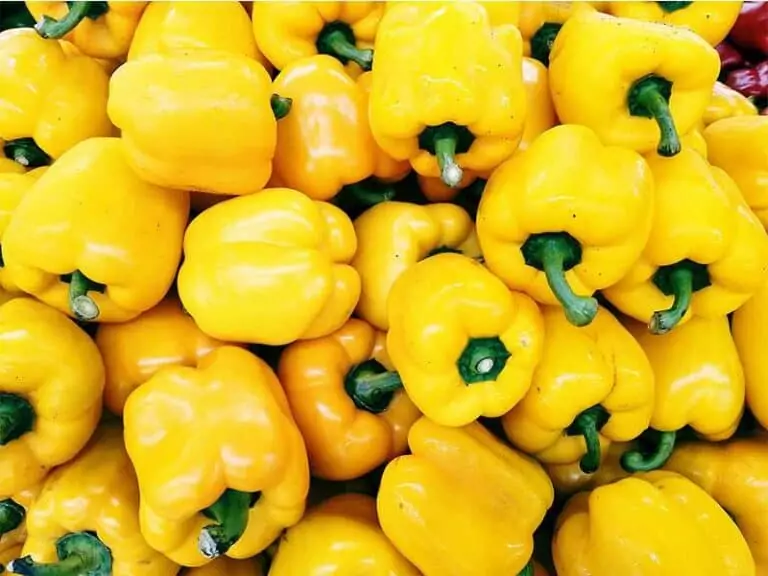
Yellow Bell Pepper
Yellow bell pepper is a vibrant vegetable known for its bright yellow color and sweet flavor. It is rich in vitamins, often used to make salads, stir-fries, and grilling.
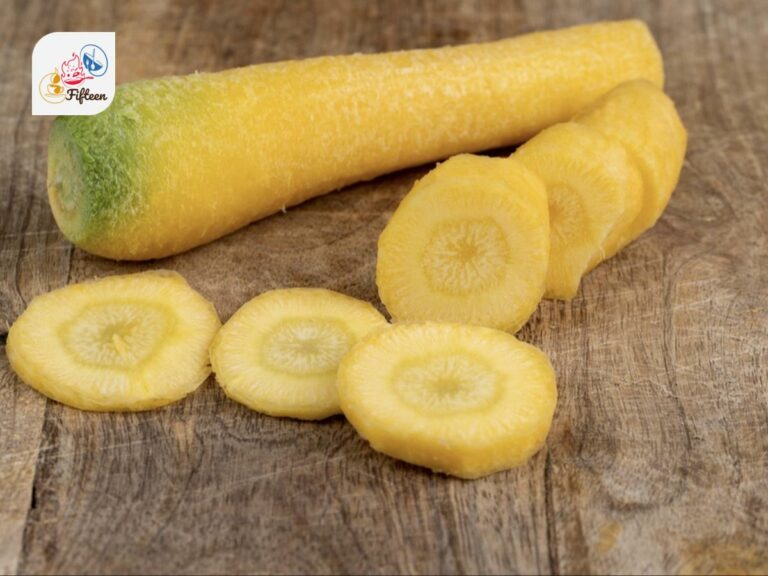
Yellow Carrot
Yellow carrots are a colorful variant of the common carrot, characterized by their pale yellow color. They offer a sweeter and milder taste compared to orange carrots.
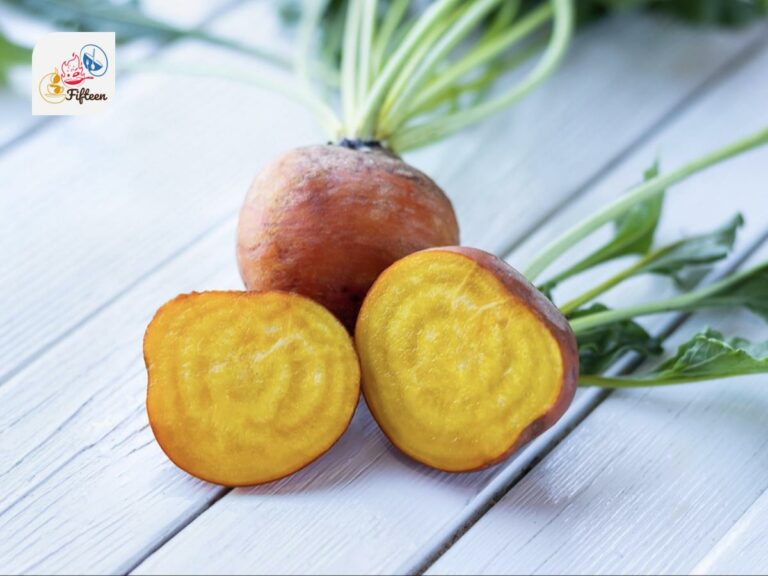
Yellow Beet
Yellow beet is a root vegetable similar to red beets but with a golden-yellow hue. They have a sweet, slightly earthy flavor and are less likely to stain than their red counterparts, perfect for salads and roasting.

Golden Cauliflower
Golden cauliflower is a variety of cauliflower that stands out with its yellow-gold color. It tastes similar to white cauliflower but comes with a more vibrant color.

Spaghetti Squash
Spaghetti squash is a unique yellow vegetable that, when cooked, separates into strands resembling spaghetti noodles. It’s a versatile squash usually baked and shredded into thin strands
Remember, there are more veggies with a yellow appearance as this is a very common color spectrum in the wild.
After knowing about these vegetables and fruits, what do you think about them? Let me know about the fruits in the comment section, and don’t forget to share them with other people around you.

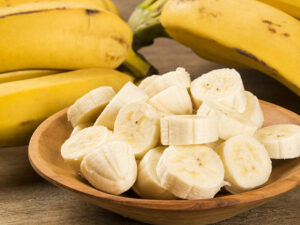
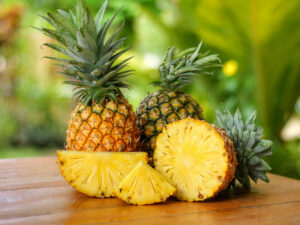
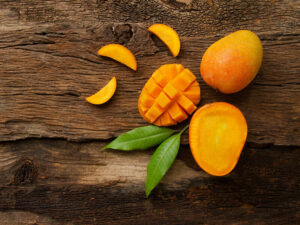
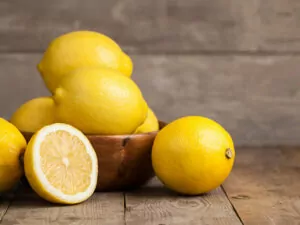
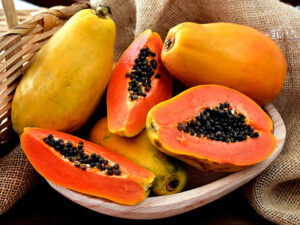
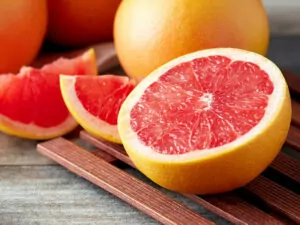
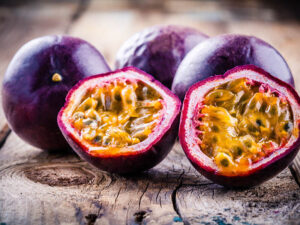
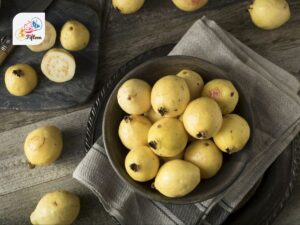
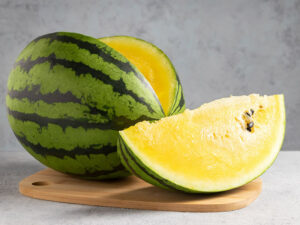
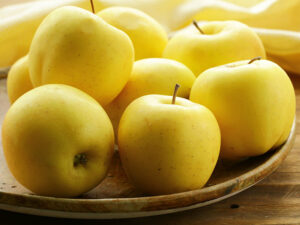
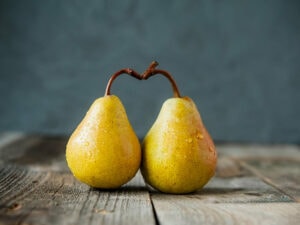
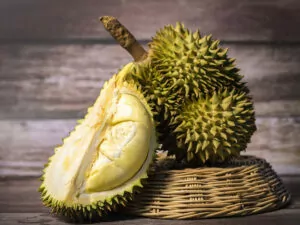
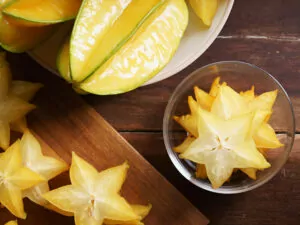
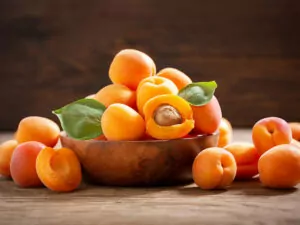
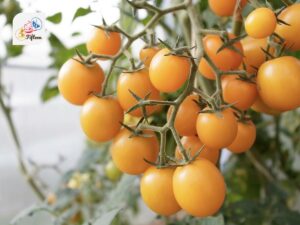
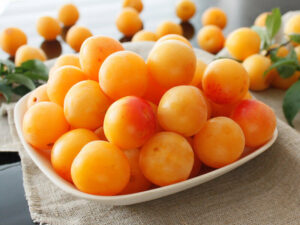
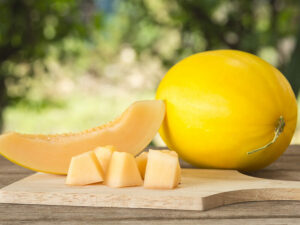
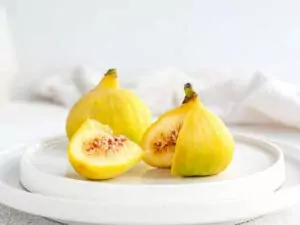
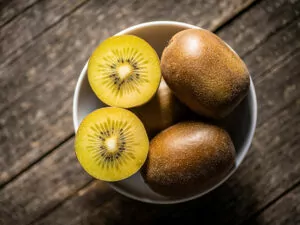
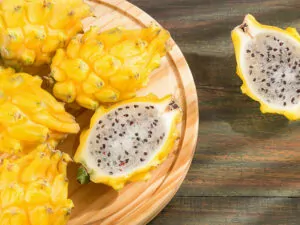
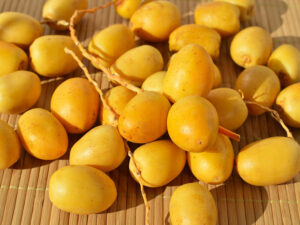
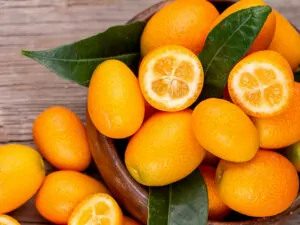
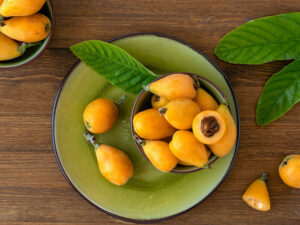
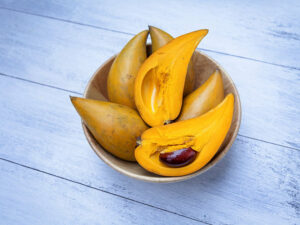
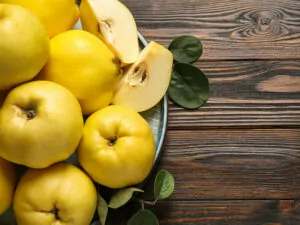
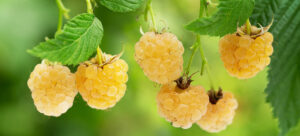
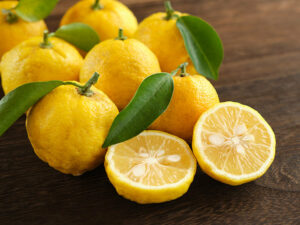
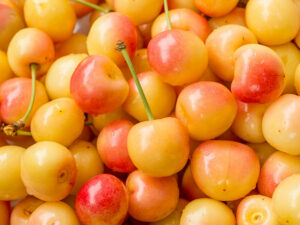
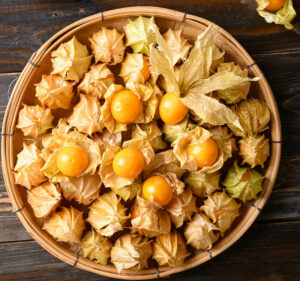
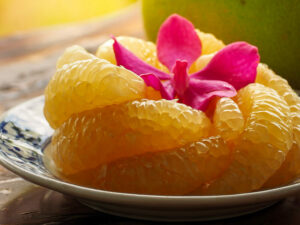
Jamie Scott
Editor in Chief, Senior Content Writer
Expertise
Home Cooking, Meal Planning, Recipe Development, Baking and Pastry, Food Editor, Cooking-video Maker, Western Food Evaluation Expert
Education
Le Cordon Bleu College of Culinary Arts
Local Community College, New York, NY
Jamie Scott is a skilled culinary expert and content creator specializing in Western cuisine. With over 15 years in the culinary field and formal training from Le Cordon Bleu, Paris, Jamie deeply understands how to blend nutrition with delicious flavors. His passion for cooking matches his commitment to making healthy eating accessible and enjoyable.
On Fifteen.net, Jamie brings a fresh perspective to classic dishes and beverages, offering readers insightful recipes, cooking tips, and a fresh view on meal planning that emphasizes taste, health, and simplicity.